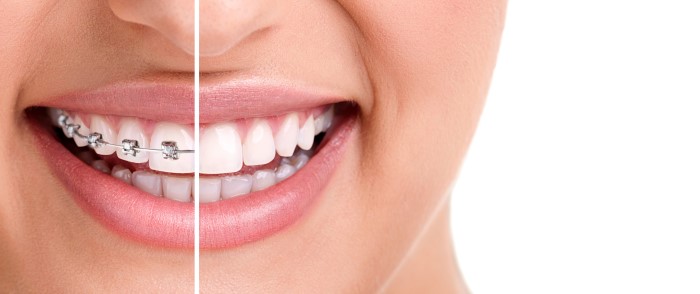Assessing Your Options When It Comes To Braces

We often consider braces as being something consigned to a horrible reminder of our teenage years, but more adults than ever are opting for braces to give them that pearly white smile!
Before you get too put off by the notion of a mouth full of metal, dental methods have come a long way in recent years.
We’re going to take a look at some of the more traditional methods, as well as some of the more exciting (and subsequently more expensive) options.
The type of braces you’re probably most familiar with is the fixed brace. These are the metal brackets lined up with a wire which you may have had as a kid, as they’re available free for under-18s on the NHS.
There is also a removable option available, although these are rarely recommended and are only used when the teeth crowding isn’t as severe.
While they may not be the prettiest, these are the cheapest option available and they still do the job, but as an adult you’ll probably want to explore some of the higher end options.
Before you write off the old “train-tracks” though, check out this article from Huffington Post which reveals that braces are becoming a status symbol in Asia!
We’re not sure it’ll catch on over here but who knows!
Thankfully dental technology has advanced some way, and there are some great new options out there if you are thinking of undergoing treatment.
Clear fixed braces are increasingly popular and work more or less the same as a traditional fixed brace.
The main difference is that instead of the usual metal brackets, either clear or ceramic ones are used so that they blend into the teeth.
Some examples go even further by making the wire that attaches the bracket clear as well.
While clear fixed braces aren’t exactly invisible, they blend in much better than your average brace, and won’t draw anywhere near as much attention.
However, by far the best option currently available is Invisalign. This treatment involves having completely clear plastic aligners custom made, which are almost completely invisible.
If there are a couple of downsides to Invisalign, they have to be worn at almost all times, and you’ll have to keep going back to have them replaced every couple of weeks for between nine and 15 months.
It goes without saying that these braces aren’t cheap, and you won’t be able to get them on the NHS, but get in touch with a private clinic such as Queens Gate Orthodontics in London to see if its an option for you.
While getting braces to improve your teeth can give a real confidence boost, its something you should consider long and hard before deciding on.
Thankfully, if you do choose to go for it, it’s certainly good to know that there are some very discreet options out there.
